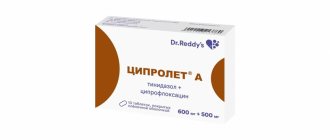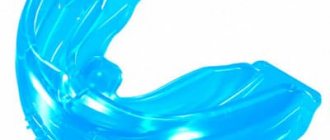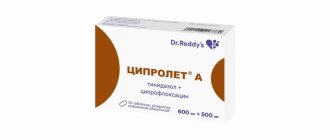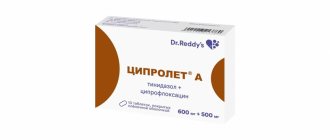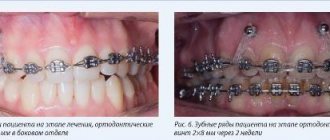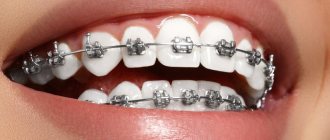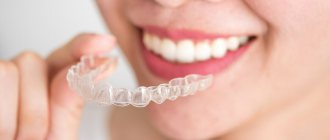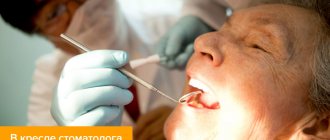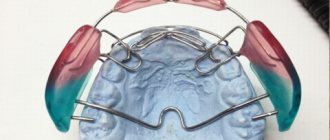Orthodontic treatment necessary to correct the bite and incorrect position of the teeth is not only braces, the main period of use of which is the period of permanent dentition. In temporary and temporary dentition, as well as in cases of diseases of the hard tissues of teeth, allergic reactions to metal, as a rule, removable appliances that are structurally simpler, but very effective in their indications, are used. As the name suggests, such structures can and even need to be removed while eating and brushing your teeth, and this is their significant advantage. The method of fixing removable orthodontic appliances in the mouth is as simple as possible, and quick adaptation creates additional ease of use for patients.
Wearing features and effectiveness
The main rule for using removable orthodontic appliances is to wear them regularly. The ability to remove structures is a temptation for children, so the child’s self-discipline and sufficient control on the part of parents are important in this matter. Depending on the type, removable orthodontic appliances must be worn from 12 to 24 hours a day. It should be stored in a special container that protects it from bacteria, and cleaned with a regular brush.
If you regularly wear plates, trainers or mouth guards for six months or more, strictly following your doctor’s recommendations, you can achieve lasting and very successful results.
Return to list of articles
Kinds
Aligner aligners . These lightweight, clear, biopolymer trays are placed over teeth to correct minor malocclusions or consolidate the results of more serious treatment. They are made individually using digital impressions and digital modeling, which allows one to accurately predict the fit and the result of further work. Aligner aligners can change the position of one or more teeth, realigning them into the dentition and positively influencing the bite.
Records . Removable orthodontic devices of a mechanical type. They consist of a plastic biocompatible base on which mechanical elements (springs, screws, arcs) are installed. They can move both individual teeth and affect the shape of the dentition.
Thanks to the plates, the following orthodontic problems can be solved:
- correct the shape of the jawbone,
- stimulate or inhibit jaw development,
- prevent teeth from moving in the wrong direction,
- adjust the width of the sky,
- keep teeth in the desired position to secure a physiological bite.
You can correct your bite with plates from the age of 6-7 to 12-13 years, that is, during the period when baby teeth are replaced by permanent teeth. At this time, the dental system is actively growing, and this process can be easily influenced without braces. Typically, children quickly adapt to removable appliances, and bite correction is comfortable. In addition, plates are less noticeable on the teeth than braces.
Trainers . These are elastic silicone devices that help eliminate the very causes of malocclusion and are shown:
- with an open or deep bite,
- crowding of the anterior incisors on the lower jaw,
- incorrect position of the lower jaw,
- nasal breathing problems,
- violation of the swallowing mechanism,
- to eliminate bad habits,
- to consolidate the results of treatment.
Trainers are useful because they “train” the jaw muscles to work properly. This prevents relapses, which sometimes occur after plates or braces. The trainer is worn at night and for 3-4 hours during the day. During sleep, the trainer normalizes breathing and swallowing functions and trains the tongue.
Other types of removable orthodontic appliances include various facial (outside the oral cavity) arches and masks, palatal clasps, and functional appliances. Each of them solves its own range of problems, correcting the position of teeth, training muscles, and setting the desired direction for jaw development.
When to start treatment: recommendations from orthodontists
- If you notice that you or your child have problems with tooth growth or closure of the dentition, then you need to visit an orthodontist. This is a specialist who diagnoses and treats orthodontic problems.
- The child should be shown to a specialist even if there are no visual signs of orthodontic disease. This should be done at 3–4 years of age, when the so-called “deciduous” bite has formed, i.e. all (or almost all) milk teeth have erupted.
- Orthodontic treatment should begin as early as possible. Even if the baby is still small and it is too early for him to get braces, you can start correcting the bite in other ways, which were mentioned in this article. It is possible that after the therapy, the use of more serious methods will not be necessary.
- Orthodontic treatment can be initiated at any age, even in adulthood. The effect will be achieved, only the duration of therapy will increase. This is due to the fact that after the formation of the skeleton is completed, the bone tissue becomes less elastic, so the movement of teeth in a given direction will be slower.
- Regardless of age, the patient must be psychologically prepared for a long and not always comfortable process. Having a positive attitude and motivation is the key to achieving the desired result.
Dental offers orthodontic treatment services in Moscow in one of its branches. We provide payment in installments for a course of therapy to correct the bite, and issue the necessary medical documents for processing personal income tax deductions. Our orthodontic specialists have high medical qualifications and improve their professional level in leading Russian and European dental clinics.
Branches of our orthodontic center are located in Moscow within walking distance from the metro:
- Art. Alekseevskaya (VDNKh district, etc. Mira), address: st. 3rd Mytishchiskaya house 3, building 2;
- Art. Shelepikha, address: Shelepikhinskaya embankment, address: building 34, building 1.
Pathology of teeth position or bite formation is not a death sentence. We are ready to begin treatment, regardless of the complexity of a particular clinical case. Our specialists are waiting for you!
Auxiliary elements
To perform additional actions, tubes, locks, hinges, buttons and other elements are used. The tubes help move the arc and are secured with screws. Locks are installed for brace systems, providing a reliable connection to the structure, free or rigid fixation. Lingual buttons are necessary for installing power elements. They are installed on the surface of the tooth using glue; externally, they are compact mushroom-shaped products that do not have a traumatic effect on the surrounding tissues.
General overview
The mechanical type of these devices affects the bite due to the force that their construction provides (the muscles are not used). The formation of this force is facilitated by certain parts of the device, namely a screw, an inclined arc, a rubber rod and a spring. The most important role is played by pressure - its value is regulated by the orthodontist. In numbers, the value should be no more than 20 g/cm2 - this is just stable blood pressure in the capillaries. Due to constant stress, gradual deformation of teeth and bone tissue occurs. It is not recommended to increase the pressure - this can lead to pressure on the nerve endings. This may entail a decrease in the blood supply to the periodontal tissue, as well as become a source of necrosis with subsequent impairment of jaw mobility. If this happens, the device will have to be immediately removed and reinstalled, which will negatively affect the progress of treatment. Also, most mechanical devices are non-removable (the patient must wear them from the moment of installation until the end of the treatment procedure). Most often, devices are adjusted to a person’s parameters, and replacing them can throw the whole process back to the original stage.
When wearing plates, you must follow some rules
- Brush your teeth at least twice a day and be sure to rinse your mouth after every meal - this will avoid the accumulation of microbes on their surfaces and the occurrence of dental caries.
- Remove during meals and active sports in order to avoid unnecessary contamination of the plates, food getting stuck in them, their breakage and dental trauma.
- It is necessary to clean the records daily, with a toothbrush and a special gel.
- Make sure that no hard deposits form on the record. If plaque appears that cannot be cleaned on your own, you should contact the clinic for professional cleaning of the records.
- For disinfection, it is necessary to leave it in a special solution once a week, at night.
How is the cost of orthodontic therapy determined?
The price of an occlusion correction course for different patients can vary significantly.
The final cost depends on the following factors:
- volume of diagnostic studies. Thus, diagnostics for therapy using aligners and plates are much cheaper than those when planning treatment using braces;
- the type of therapy chosen by the doctor (plates, aligners, braces);
- models of orthodontic apparatus. The cost of products may vary significantly;
- complexity of the clinical case. The more complex the defect, the longer the treatment will take.
Indications and contraindications for bite correction
Indications:
- Incorrect location of dental elements (displacement or rotation around the axis)
- Crowded teeth
- Large interdental spaces
- Displacement of the jaws relative to each other
Contraindications:
- AIDS, HIV
- Tuberculosis
- Blood or bone diseases
- Oncology
- Diabetes mellitus and thyroid pathologies
- Serious mental disorders
Important: contraindications to orthodontic treatment are identified by a specialist according to the patient. Therefore, you should definitely inform your doctor if you have any health problems. The desire for ideal occlusion can result in deterioration of health for a person burdened with the listed diseases.
Classification depending on fixation methods
Any orthodontic systems require long-term wear to achieve results. Sometimes they need to be put on for a couple of hours during the day, or at night, and sometimes they need to be left on for a year or more. The following types of devices are distinguished:
- Removable systems. They are most often used in children, or for adults - for minor malocclusions. Such devices are worn for a limited time, which is prescribed by the orthodontist. The most common option is to wear the system for 12 hours. This is very convenient, because such orthodontic appliances for children can only be worn at night, before bed, which will allow the child to maintain self-esteem and not be embarrassed by their peers.
- Fixed systems are installed for a long period, from six months or more. The most famous of these devices are braces. They cannot be removed or installed independently; only an orthodontist should do and adjust them.
- Combined systems. As is already clear from the name, their essence lies in the use of both removable and non-removable devices. For example, wearing braces is often combined with special bandages or orthodontic traction.
Pshizova Asiyat
Dentist-orthodontist
Aligners (aligners)
Aligners
– a progressive and quite comfortable method of correcting pathologies of the dental apparatus of minor and moderate severity. This is a transparent plastic product that is worn over the teeth. For each patient, several sets are individually manufactured, each of which differs from each other by a slight change in geometric parameters. The patient independently changes the aligners in accordance with the treatment regimen, the teeth gradually move into the desired position. The most relevant models are those specially designed for children and adolescents, for example, FlexiLigner (“flexics”) and KidsLight, as well as universal Invisaling aligners.
Possible options
After determining the type of pathology and the degree of its development, the patient is faced with the choice of using one of the possible devices.
Maxillary
When increasing the size of the upper jaw, it is recommended to use the following devices:
- Coffin spring system
It is a plastic base to which springs (double or single) are attached, in the shape of a circle, oval or S-shaped bend. Two fixing processes go to this structure. The size of the spring is determined by its type: a single spring is made from wires with a diameter of 0.8-1.5 mm, and a double one - 08.09 in the outer bend and 0.6-0.7 in the inner bend. The length for any type is the same - from 70 to 80 mm. The mechanism itself uses a springy property that allows the defect to be gradually corrected. The design is used at all stages of tooth development - milk, replacement and permanent. The main task is to expand the upper jaw arch. It is also used for shifts in the mesio-distal direction. In this case, the device should be placed with the more open part towards the rear.
If you need to enlarge the jaw in the lateral parts, a device with a double spring is used. It has activation features - approximately once every two weeks using spring extension.
- Devices with standard screw
This is also a kind of plate base, but there are no springs. They are replaced by a screw. If expansion of an entire jaw row is required, it is installed along the palate, and the necessary cutting is also made. In order for the elongation to occur smoothly, the device should be positioned at a right angle. For this purpose, secreted screws are installed at the fangs. The cut in this case is performed either perpendicularly or sectorally.
- Fan screw plates
This device is used much less frequently. Used to smoothly expand the anterior part of the jaw. If stretching is necessary for the entire length, symmetrical screws are used; if only on one side, asymmetrical screws are used.
Mandibular
The design that is used to lengthen the lower jaw is clearly different from the previous ones.
- With Koller spring
There are two types of these devices - for asymmetrical and symmetrical changes. The first design includes an arch that is located under the tongue. Two semicircular springs are attached to it, and two semicircular processes extend from them. In the second case, the basis of the structure remains the same, but has additions in the form of five springs in the shape of a semicircle (replacing the previous two). Let's look at the numbers: to produce the mechanism, wire 1.3-1.4 cm in length and 1.0-1.2 mm in diameter is used. Its curve is individual for everyone - so that when wearing it the frenulum of the tongue does not get affected. The size of the bends should not be more than 8.0 mm. The boundaries of the spring extend beyond the base, so there is no need to cover them with plastic. After this, the end of the wire is bent in the shape of a wave and passes next to the alveoli. The base itself should not reach the wire by 0.8-1.0 mm. If there are additional indications, the spring can be additionally bent into bends with a step width of 3.0-4.0 mm and up to 8.0 mm in length. They can be adjusted.
- With screw
This mechanism is used for installation above the lingual frenulum (in this case the cut is made vertically). If expansion of the lower jaw is required, two screws are attached to the apparatus and two vertical cuts are made. Their location depends on the fangs.
It is up to the doctor to decide which of the presented devices will be installed when correcting the bite. This is influenced by the neglect of the case, the condition of the teeth and tissues. Parameters such as duration of use of the structure and pressure force are calculated for each patient individually.
The service is performed
Plaksina Margarita Mikhailovna
Dolotova Marina Dmitrievna
Soldatenkova Alina Aleksandrovna
All doctors
Braces
Fixed orthodontic structures. They are classified according to several defining characteristics:
- positioning location. They can be vestibular (fixed on the outer side of the dentition) and lingual (installed on the inner side);
- method of attaching the power arc to the bracket pads. They are divided into ligature (fastening using ligatures - plastic rings or wires) and non-ligature (attached with small clip-locks);
- material of manufacture. The most popular are metal and ceramic products.
According to experts, the following models are considered the most popular:
- lingual non-ligature metal: WIN, INCOGNITO;
- vestibular non-ligature metal: Damon Q, H4;
- vestibular non-ligature ceramic: Damon Clear;
- vestibular metal ligatures: Biomim, Victory;
- vestibular ligature ceramic: Advanced, Hype.
Price
| Click to sign up for a FREE consultation |
The price of the devices is relatively reasonable:
- with Coffin spring from approximately 14,000;
- with screw for the upper jaw from 15000;
- with fan-shaped propeller from 19000;
- with Koller spring from 18000;
- with screw for the lower jaw from 20,000.
This is the price exclusively of the structures themselves. It is also necessary to pay for diagnostics, drawing up a treatment plan, calculating pressure parameters, and subsequent maintenance of the mechanical device.
The effectiveness of these devices for changing the bite is undeniable. All inconveniences during use and maintenance are eliminated by the end result.
The result of using removable devices
Removable devices are more often used to treat children. They are effective during the period when the milk bite is replaced by a permanent one. In adult patients, this choice is justified in the following cases:
- Minor defect.
- The patient's lifestyle does not allow wearing braces.
Removable orthodontic appliances are comfortable, but they must be worn for 14 to 16 hours daily to be effective. The wearing time depends on the type of orthodontic appliance. This requires the patient to strictly follow the doctor’s recommendations. Otherwise, the effect is reduced. Treatment either does not lead to the desired results or takes a long time.
Myogymnastics
This correction method is functional and involves training the facial and chewing muscles that keep the jaw system in the correct position. The exercises are effective when the child is between 3 and 5 years old. At an older age, myogymnastics is used as an additional method of correction, i.e., simultaneously with wearing removable or fixed orthodontic devices. The condition for the effectiveness of using the described method is the regularity of the exercises. Therefore, the main burden in treating young children falls on their parents.
